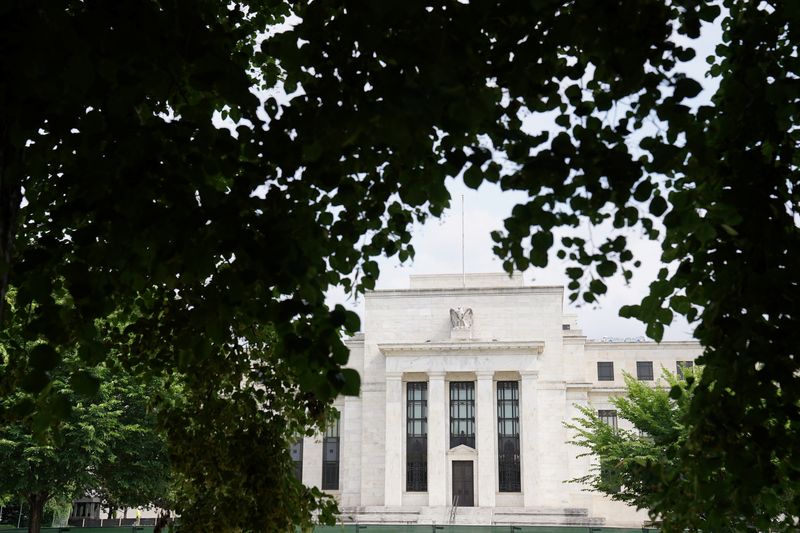In the summer of 2023, Brian Brown’s landscaping business near Lake Tahoe faced a challenging period with prospects drying up. The affluent clientele typically associated with luxury properties started to hesitate on projects, leaving Brown concerned about the financial health of his business. With fewer bids accepted and a thin cash reserve heading into the winter off-season, he contemplated the unsettling prospect of layoffs among his six employees and cut bonuses as a precautionary measure. However, a significant pivot occurred in September when the Federal Reserve signaled a shift in its monetary policy towards lower borrowing costs. Brown felt a sense of relief, anticipating that this change would allow him to refinance expensive loans and allocate resources towards expanding his operations while navigating the uncertain economic landscape in the lead-up to the presidential election.
Brown’s situation reflected a broader trend reported by various businesses across the nation, demonstrating an emerging optimism as the Fed altered its approach to interest rates. Surveys from the Federal Reserve indicated that businesses, previously experiencing a decline influenced by rising rates, displayed renewed confidence. In its latest Beige Book, the Fed noted that while many business conditions remained lackluster, improvements were anticipated due to the prevailing environment of decreasing interest rates. This sentiment was echoed by finance sectors, with banks expressing increased optimism regarding a potential rebound in loan activity, establishing a more positive outlook for investments and expansion.
As economic conditions began to shift, the outlook among lenders became notably more optimistic. Citizens Financial Group’s CEO, Bruce Van Saun, remarked on the potential for a rebound in loan demand as confidence returned to businesses ready to invest. Early responses from banks following the Fed’s rate cuts revealed that while loan demand shrank, lenders were more sanguine about future growth, with an uptick in expectations for increased business activity. This optimism marked a change from the cautious atmosphere that had prevailed during the Fed’s rate-hike phase that began in 2022. The forthcoming Federal Reserve meetings scheduled for early November and December heightened interest in anticipated further policy adjustments, particularly as analysts speculated on the timing and extent of additional rate reductions.
An example of a business poised for expansion due to changes in fiscal policy is MassageLuxe franchisee Tracy Thomas. With a relatively recent opening of her first spa, Thomas noted that the lower borrowing costs would facilitate her plans to grow by acquiring a second franchise sooner than originally anticipated. The improvement in her financial outlook, bolstered by an increase in members at her spa, signifies how evolving monetary policy can positively impact small business ecosystems. Similarly, Sabrina Fuller, who runs a house-painting business in Georgia, expressed hopes that the Fed’s decision to ease rates would result in increased consumer spending in home improvement projects, ultimately enhancing the business climate.
Despite a cautious environment driven by uncertainty, there appears to be a consensus among Fed policymakers in favor of further reductions in short-term borrowing costs to support the labor market and combat inflation. The general expectation is that the policy rate will trend downward to between 3% and 3.5% by the end of the following year. Notably, Huntington Bank CFO Zach Wasserman mentioned that the market’s growing confidence in a sustained reduction of interest rates was prompting increased decision-making and deal-making across the sector. The newfound certainty regarding declining rates is catalyzing businesses to act more decisively, indicating a potential turnaround in investment behaviors.
As businesses like Brown’s landscaping firm navigate the newly optimistic landscape, the larger economic narrative suggests a possible revival for companies burdened by previous high-interest-rate environments. While the immediate impacts of the Fed’s policy adjustments may take time to materialize, the consensus reflects a growing belief that lower borrowing costs will stimulate consumer and business spending. As uncertainties such as the upcoming presidential election loom, the anticipation of recovery shapes the outlook for the economy, fostering cautious optimism as businesses prepare for more favorable conditions ahead. The interconnectedness of monetary policy and small business growth underscores the pivotal role that such decisions play in shaping the economic environment for entrepreneurs across various sectors.

